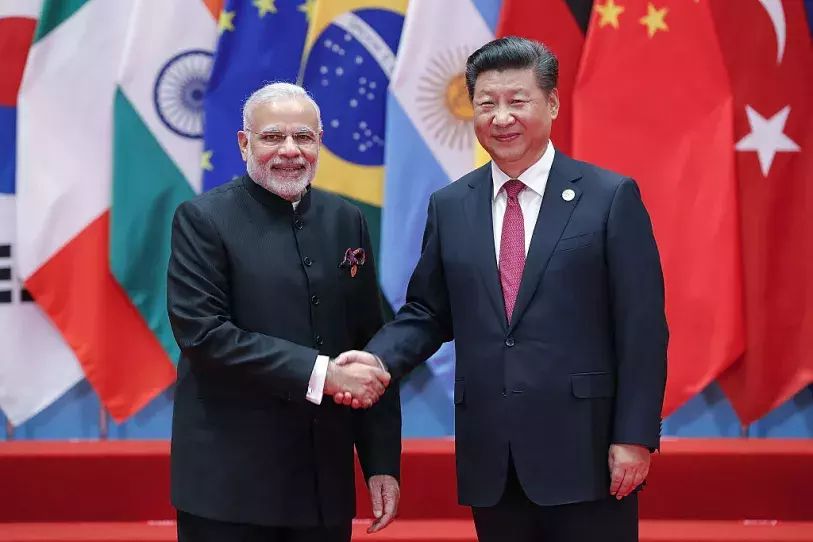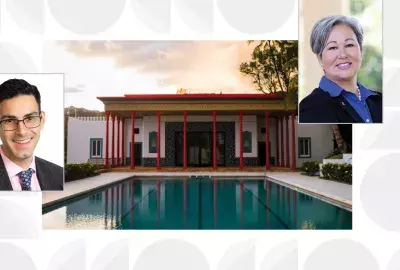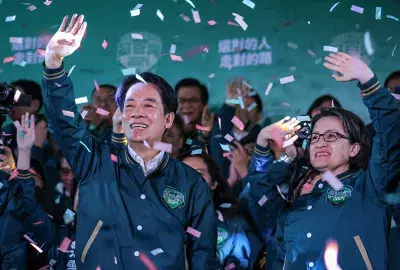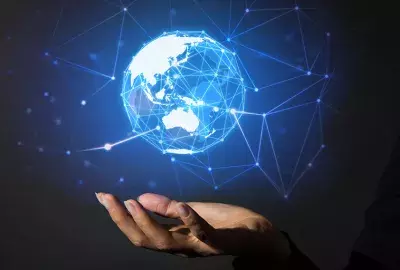Error message

By Jagannath Panda
HONOLULU (22 May 2020)—The coronavirus pandemic has brought several international issues into sharper focus. One serious concern is the loss of confidence in the decision-making processes of global institutions, particularly in the area of public health. Given the erosion of global leadership, can India and the US act together to address the challenges to global governance regimes raised by the pandemic?
Responses to the pandemic
As sovereign and vibrant democracies, India and the US have served as key guardians of the international rules-based order. In the US—one of the countries most severely affected by the pandemic—COVID-19 has called into question the effectiveness of domestic public-health measures. The failure of the US government to anticipate the nature and extent of the pandemic has also harmed the country’s reputation internationally.
In an effort to retain its leadership position, the US has released an aid package of $174 million, in addition to a previously approved $100 million, to more than 60 nations that have been worst affected by the pandemic. As part of this package, the US has reportedly offered $2.9 million to India to promote technical expertise by setting up laboratory systems and developing event-based surveillance.
India’s handling of the health crisis been swift and appears to be effective. For a country with such a large population, the number of cases is strikingly low. But, as in the US, the pandemic has exposed India’s weaknesses in health infrastructure, including its poor medical facilities.
Internationally, India is the global leader in the manufacture of generic drugs, providing almost 45 percent of the US supply. India first responded to the Covid-19 crisis by restricting the export of more than 20 important drugs, given concerns about domestic supplies, but then lifted restrictions, which provided a much-needed boost to global pharmaceutical supply chains.
Moving forward
As the world moves toward a post-COVID order, India must not only work to fill its own basic infrastructure gaps in the health sector and elsewhere, but it must also strengthen its role in the liberal international order. Specifically, India needs to position itself as an effective Asian power that provides a balance with China. This effort will require cooperation with the US in several areas.
A key concern is the current dependency on China for the global supply of active pharmaceutical ingredients. Today, India imports close to 70 percent of its active pharmaceutical ingredients from China. Diversifying this critical global supply chain will require a joint effort by the US and India.
Another potential area for greater collaboration is broadening the application of artificial intelligence (AI) to strengthen health systems in both countries. In the US, the National Institutes of Health is conducting ground-breaking research on the use of AI in diagnostics and other medical applications. In India, the National Institution for Transforming India Aayog is exploring AI applications to expand access to healthcare, particularly in India’s underserviced rural areas. Both countries stand to gain from greater cooperation in these endeavors.
On a broader scale, India and the US need to work together to strengthen the global governance regime and the institutions that are the backbone of the liberal international order. The World Health Organization’s controversial handling of the pandemic has exposed important limitations. Another weakness that has been exposed was the ability of China to block any substantial debate on the pandemic in the United Nations Security Council during March 2020, when China held the Presidency and COVID-19 was reaching its global peak.
Reforms to strengthen global institutions must bring in greater diversity, including more constructive engagement with Europe, Canada, Asia’s democratic regimes such as Japan and South Korea, and key countries in Africa. Another major step in the longer run would be for India to secure a permanent seat in the Security Council, a move that will require strong support from the US.
Both India and the US must also better align their policies vis-à-vis China, which remains the biggest fault line in their Indo-Pacific partnership. Put simply, Washington pursues a “China containment” policy intended to uphold its own supremacy in the Indo-Pacific. New Delhi, on the other hand, pursues a policy to “contain Chinese characteristics,” including Beijing’s autocratic regime, its unilateral foreign policies, and its quest for economic dominance in the region.
India’s approach toward China is both cooperative and competitive. China is India’s immediate neighbor and a vital economic partner, which constrains New Delhi from subscribing openly to a “containment” strategy as voiced by Washington. India’s extensive participation in the Asian Infrastructure Investment Bank, which was initiated by China, and the New Development Bank, established by the BRICS states (Brazil, Russia, India, China, and South Africa) and headquartered in Shanghai, shows New Delhi’s willingness to engage with China as a development partner. On the other hand, India’s strong objection to China’s Belt and Road initiative stems from geo-strategic rivalry between the two countries.
To balance China’s growing influence, the US must preserve its leadership role in the Indo-Pacific. The US military presence has grown steadily in recent years, and the US private sector is the largest source of foreign direct investment in the Indo-Pacific, supporting more than 5 million jobs for citizens of the region. Building on this strong involvement, the US has an opportunity to increase coordination with like-minded countries such as India.
The COVID-19 pandemic has brought the world to a standstill and has put the spotlight on weaknesses in the healthcare sector of many countries. The US and India both have a lot to gain from greater cooperation, in healthcare specifically and in strengthening international institutions more generally. A stronger India-US partnership can make an important contribution toward improving the leadership of global institutions such as the United Nations Security Council and the World Health Organization and restoring confidence in the global rules-based order.
###
Download a pdf version of this Wire article.
Jagannath Panda is a Research Fellow and Centre Coordinator for East Asia at the Manohar Parrikar Institute for Defence Studies and Analyses, New Delhi. He is also the Series Editor for Routledge Studies on Think Asia. He can be reached at [email protected].
The views expressed do not necessarily reflect the policy or position of the East-West Center or of any other organization.
The East-West Wire is a news, commentary, and analysis service provided by the East-West Center in Honolulu. All or any part of the Wire content may be used by media with attribution to the East-West Center or the person quoted. To receive Wire articles via email, subscribe here. For links to all East-West Center media programs, fellowships and services, see EastWestCenter.org/Journalists.
The full list of East-West Wires produced by the Research Program is available on the East-West Center website at EastWestCenter.org/Research-Wire. For more on the East-West Center Research Program, see EastWestCenter.org/Research.
The East-West Center promotes better relations and understanding among the people and nations of the United States, Asia, and the Pacific through cooperative study, research, and dialogue.
Series editors:
Derek Ferrar
[email protected]
Sidney B. Westley
[email protected]
Photo: Indian Prime Minister Narendra Modi and Chinese President Xi Jinping at the 2016 G20 Summit in Hangzhou, China. In its relationship with the US, India needs to position itself as an effective Asian power that provides a balance with China. Credit: Lintao Zhang/Getty Images.
By Jagannath Panda
HONOLULU (22 May 2020)—The coronavirus pandemic has brought several international issues into sharper focus. One serious concern is the loss of confidence in the decision-making processes of global institutions, particularly in the area of public health. Given the erosion of global leadership, can India and the US act together to address the challenges to global governance regimes raised by the pandemic?
Responses to the pandemic
As sovereign and vibrant democracies, India and the US have served as key guardians of the international rules-based order. In the US—one of the countries most severely affected by the pandemic—COVID-19 has called into question the effectiveness of domestic public-health measures. The failure of the US government to anticipate the nature and extent of the pandemic has also harmed the country’s reputation internationally.
In an effort to retain its leadership position, the US has released an aid package of $174 million, in addition to a previously approved $100 million, to more than 60 nations that have been worst affected by the pandemic. As part of this package, the US has reportedly offered $2.9 million to India to promote technical expertise by setting up laboratory systems and developing event-based surveillance.
India’s handling of the health crisis been swift and appears to be effective. For a country with such a large population, the number of cases is strikingly low. But, as in the US, the pandemic has exposed India’s weaknesses in health infrastructure, including its poor medical facilities.
Internationally, India is the global leader in the manufacture of generic drugs, providing almost 45 percent of the US supply. India first responded to the Covid-19 crisis by restricting the export of more than 20 important drugs, given concerns about domestic supplies, but then lifted restrictions, which provided a much-needed boost to global pharmaceutical supply chains.
Moving forward
As the world moves toward a post-COVID order, India must not only work to fill its own basic infrastructure gaps in the health sector and elsewhere, but it must also strengthen its role in the liberal international order. Specifically, India needs to position itself as an effective Asian power that provides a balance with China. This effort will require cooperation with the US in several areas.
A key concern is the current dependency on China for the global supply of active pharmaceutical ingredients. Today, India imports close to 70 percent of its active pharmaceutical ingredients from China. Diversifying this critical global supply chain will require a joint effort by the US and India.
Another potential area for greater collaboration is broadening the application of artificial intelligence (AI) to strengthen health systems in both countries. In the US, the National Institutes of Health is conducting ground-breaking research on the use of AI in diagnostics and other medical applications. In India, the National Institution for Transforming India Aayog is exploring AI applications to expand access to healthcare, particularly in India’s underserviced rural areas. Both countries stand to gain from greater cooperation in these endeavors.
On a broader scale, India and the US need to work together to strengthen the global governance regime and the institutions that are the backbone of the liberal international order. The World Health Organization’s controversial handling of the pandemic has exposed important limitations. Another weakness that has been exposed was the ability of China to block any substantial debate on the pandemic in the United Nations Security Council during March 2020, when China held the Presidency and COVID-19 was reaching its global peak.
Reforms to strengthen global institutions must bring in greater diversity, including more constructive engagement with Europe, Canada, Asia’s democratic regimes such as Japan and South Korea, and key countries in Africa. Another major step in the longer run would be for India to secure a permanent seat in the Security Council, a move that will require strong support from the US.
Both India and the US must also better align their policies vis-à-vis China, which remains the biggest fault line in their Indo-Pacific partnership. Put simply, Washington pursues a “China containment” policy intended to uphold its own supremacy in the Indo-Pacific. New Delhi, on the other hand, pursues a policy to “contain Chinese characteristics,” including Beijing’s autocratic regime, its unilateral foreign policies, and its quest for economic dominance in the region.
India’s approach toward China is both cooperative and competitive. China is India’s immediate neighbor and a vital economic partner, which constrains New Delhi from subscribing openly to a “containment” strategy as voiced by Washington. India’s extensive participation in the Asian Infrastructure Investment Bank, which was initiated by China, and the New Development Bank, established by the BRICS states (Brazil, Russia, India, China, and South Africa) and headquartered in Shanghai, shows New Delhi’s willingness to engage with China as a development partner. On the other hand, India’s strong objection to China’s Belt and Road initiative stems from geo-strategic rivalry between the two countries.
To balance China’s growing influence, the US must preserve its leadership role in the Indo-Pacific. The US military presence has grown steadily in recent years, and the US private sector is the largest source of foreign direct investment in the Indo-Pacific, supporting more than 5 million jobs for citizens of the region. Building on this strong involvement, the US has an opportunity to increase coordination with like-minded countries such as India.
The COVID-19 pandemic has brought the world to a standstill and has put the spotlight on weaknesses in the healthcare sector of many countries. The US and India both have a lot to gain from greater cooperation, in healthcare specifically and in strengthening international institutions more generally. A stronger India-US partnership can make an important contribution toward improving the leadership of global institutions such as the United Nations Security Council and the World Health Organization and restoring confidence in the global rules-based order.
###
Download a pdf version of this Wire article.
Jagannath Panda is a Research Fellow and Centre Coordinator for East Asia at the Manohar Parrikar Institute for Defence Studies and Analyses, New Delhi. He is also the Series Editor for Routledge Studies on Think Asia. He can be reached at [email protected].
The views expressed do not necessarily reflect the policy or position of the East-West Center or of any other organization.
The East-West Wire is a news, commentary, and analysis service provided by the East-West Center in Honolulu. All or any part of the Wire content may be used by media with attribution to the East-West Center or the person quoted. To receive Wire articles via email, subscribe here. For links to all East-West Center media programs, fellowships and services, see EastWestCenter.org/Journalists.
The full list of East-West Wires produced by the Research Program is available on the East-West Center website at EastWestCenter.org/Research-Wire. For more on the East-West Center Research Program, see EastWestCenter.org/Research.
The East-West Center promotes better relations and understanding among the people and nations of the United States, Asia, and the Pacific through cooperative study, research, and dialogue.
Series editors:
Derek Ferrar
[email protected]
Sidney B. Westley
[email protected]
Photo: Indian Prime Minister Narendra Modi and Chinese President Xi Jinping at the 2016 G20 Summit in Hangzhou, China. In its relationship with the US, India needs to position itself as an effective Asian power that provides a balance with China. Credit: Lintao Zhang/Getty Images.
East-West Wire
News, Commentary, and Analysis
The East-West Wire is a news, commentary, and analysis service provided by the East-West Center in Honolulu. Any part or all of the Wire content may be used by media with attribution to the East-West Center or the person quoted. To receive East-West Center Wire media releases via email, subscribe here.
For links to all East-West Center media programs, fellowships and services, see www.eastwestcenter.org/journalists.







